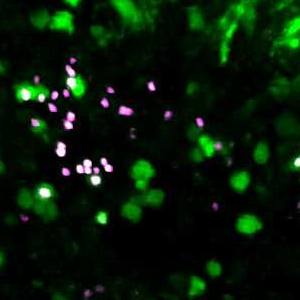Proton therapy is a newer type of radiation therapy that uses energy from positively charged particles called protons. Studies have suggested that proton therapy may cause fewer side effects than traditional radiation, since doctors can better control where the proton beams deposit their energy.
In this Mayo Clinic Minute, Dr. Robert Mutter, a Mayo Clinic radiation oncologist, explains potential long-term advantages of using targeted therapy to treat breast cancer.
Watch: The Mayo Clinic Minute.
Journalists: Broadcast-quality video (1:03) is in the downloads at the end of this post. Please courtesy: "Mayo Clinic News Network." Read the script.
Unlike traditional X-ray radiation, proton beam therapy can more precisely target tumors, sparing more normal tissue.
"The main advantage is this idea of sparing normal tissues and reducing late side effects of treatment. This is especially important in breast cancer," says Dr. Mutter.
Dr. Mutter says because the heart sits right behind breast tissue, using protons to target breast cancer tumors can reduce the radiation dose to the heart and lungs, and may offer better outcomes for patients.
"We think that that's going to lead to less risk of heart disease, and less risk of lung disease or second cancers in the future," says Dr. Mutter.
In recent years, Dr. Mutter says studies have shown the potential to safely shorten the course of radiation treatment for breast cancer.
"We think that protons may be a way that we can do this even more effectively because protons expose less normal tissues. If we can reduce the number of daily treatments, that means that my patients are able to be back with their families, or back at their work or the things that they love to do, and not coming in for their treatment," he says.
______________________________________
For the safety of its patients, staff and visitors, Mayo Clinic has strict masking policies in place. Anyone shown without a mask was either recorded prior to COVID-19 or recorded in a nonpatient care area where social distancing and other safety protocols were followed.







